Horticulture :: Vegetables:: Chilli
|
|||||||||||||||||||||||||||||||||||||||||||||||||||||||||||||||||||||||||||||||||||||||||||||||||||||||||||||||||||||||||||||||||||||||||||||||||||||||||||||||||||||||||||||||||||||||||||||||||||||||||||||||||||||||||||||
Chilli (Capsicum annuum L.)
Solanaceae
Varieties
K 1, K 2, CO 2, CO 4 (vegetable type), PKM 1, PMK 1 (for semi-dry conditions in Southern Districts), PLR1 (for coastal regions of North - East Tamil Nadu) and KKM (Ch) 1.
Hybrids
TNAU Chilli Hybrid CO 1
Soil
Well drained loamy soils rich in organic matter with pH range 6.5-7.5.
Season of sowing
1. January - February 2. June - July 3. September- October
Seed rate
Varieties: 1.0 kg / ha. Hybrids: 200 - 250 g / ha. Nursery area: 100 sq.m / ha.
Seed treatment
Treat the seeds with Trichoderma viride @ 4 g / kg or Pseudomonas fluorescens @ 10 g/ kg and sow in lines spaced at 10 cm in raised nursery beds and cover with sand. Watering with rose can has to be done daily. Drench the nursery with Copper oxychloride @ 2.5 g/l of water at 15 days interval against damping off disease. Apply Carbofuran 3 G at 10 g/sq.m. at sowing.
Protected nursery
Field preparation
Thoroughly prepare the field with the addition of FYM @ 25 t/ ha and form ridges and furrows at a spacing of 60 cm. Apply 2 kg/ha of Azospirillum and 2 kg / ha of Phosphobacteria by mixing with 20 kg of FYM. Irrigate the furrows and transplant 40-45 days old seedlings, with the ball of earth on the ridges.
Spacing
Varieties : 60 x 45 cm Hybrids : 75 x 60 cm
Weed control
Apply Pendimethalin 1.0 kg a.i. / ha or Fluchloralin 1.0 kg a.i. / ha as pre-emergece herbicide followed by hand weeding once 30 days after planting.
Irrigation
Irrigate is done at weekly intervals.
Layout and planting for drip irrigation and fertigation
Manuring
Varieties Basal dose : FYM 25 t/ha, NPK 30:60:30 kg/ ha. Potassium as K2SO4 for quality improvement. Application of potassium in the form of potassium sulphate will increase quality of chilli. Top dressing : 30 kg N/ha in equal splits on 30, 60 and 90 days after planting.
Hybrids
Basal dose : FYM 30 t / ha, NPK 30:80:80 kg / ha. Top dressing : 30 kg N / ha in equal splits on 30, 60 and 90 days after planting.
Fertigation schedule
CHILLI F1 HYBRID Recommended Dose: 120:80:80 kg / ha
75% RD of Phosporous applied as superphosphate = 375 kg / ha
1. 19:19:19 = 42 kg/ha 2. 13:0:45 = 160 kg/ha 3. 12:61:0 = 20 kg/ha 4. Urea = 193 kg/ha
Effect of Endo root soluble and Mycorrhizae on Chilli
Apply 250g of Endo Roots Soluble in two splits doses at 15 DAT and 45 DAT along with 100 % N and K and 50% P for higher yield and saving of Phosphorous. Apply 250g of Mycorrhiza in two splits at transplanting and 30 DAT along with 100% N and K and 50% P for higher yield and saving of Phosphorous.
Growth regulators
Spray Triacontanol @ 1.25 ml/l on 20, 40, 60 and 80th day of planting. Spray NAA 10 ppm (10 mg/l of water) on 60 and 90 days after planting to increase fruit set.
Micronutrient spray
Foliar spray of Zn SO4 @ 0.5 per cent thrice at 10 days interval from 40 days after planting. Spray 19:19:19 + Mn @ 1 % at 60 days after planting.
Weed control
Spray Fluchloralin @ 1 lit a.i/ha or Pendimethalin @ 1 kg a.i/ ha. or Oxyflourfen @ 0.15 kg a.i./ha as pre-emergence herbicide and may be combined with hand weeding once and earthing up 45 days after planting. Raise intercrop of onion in paired row system to get additional income.
Intercropping
The intercrops like onion and coriander can be grown for getting additional income. It can also help to control the weed population.
Plant protection
Pests Fruit borer Integrated pest management of fruit borer:
Thrips
Aphids
Treat seeds with imidacloprid 70% WS @12 g /kg of seed.
Apply phorate 10 % G @ 10 kg/ha or spray any one of the following insecticide
Yellow Muranai mite
Apply phorate 10 % G @ 10 kg/ha or spray any one of the following insecticide
Root knot nematode
Apply TNAU formulation of VAM (containing 1 spore/g) to control root knot nematode in nursery.
Diseases
Damping off Treat the seeds with Trichoderma viride 4 g/kg or Pseudomonas fluorescens 10 g/kg of seed 24 hours before sowing. Apply Pseudomonas fluorescens as soil application @ 2.5 kg/ha mixed with 50 kg of FYM. Water stagnation should be avoided and drench with Copper oxychloride at 2.5 g/lit at 4 lit/sq.m
Leaf spot
Leaf spot can be controlled by spraying Mancozeb 2 g/lit or Copper oxychloride 2.5 g/lit.
Powdery mildew Powdery mildew can be spraying Wettable sulphur 3 g/lit or Carbendazim 1 g/lit. Totally 3 sprays are required at 15 days interval from the first appearance of symptom.
Die-back and fruit rot
Spray Mancozeb 2 g/lit or Copper oxychloride 2.5 g/lit. thrice at 15 days interval starting from noticing the die-back symptoms.
Anthracnose
Use of disease-free seeds Treat the seeds with T. viride 4 g/kg or P. fluorescens 10 g / kg of seed 24 hours before sowing Spray Mancozeb 2 g/lit or Copper oxychloride 2.5 g/lit thrice at 15 days interval starting from noticing the die-back symptoms
Chilli mosaic
Raise 2 rows of maize or sorghum for every 5 rows of chilli crop against wind direction. Recommendations given for aphids may be adopted for controlling the vector.
Harvest
Harvesting can be done 75 days after transplanting. First two picking yield green chilli and subsequently yield red ripe fruits.
Yield
Varieties : 2 - 3 t/ha of dry pods or 10 - 15 t/ha of green chillies. Hybrids : 25 t / ha of green chillies.
Market information
| |||||||||||||||||||||||||||||||||||||||||||||||||||||||||||||||||||||||||||||||||||||||||||||||||||||||||||||||||||||||||||||||||||||||||||||||||||||||||||||||||||||||||||||||||||||||||||||||||||||||||||||||||||||||||||||
Agriculture Information, Agriculture News, Agriculture jobs in India
Sunday, 9 March 2014
Horticulture :: Vegetables:: Chilli
Subscribe to:
Post Comments (Atom)
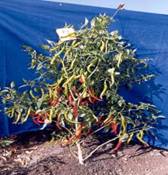
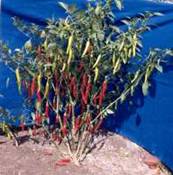





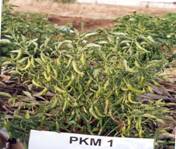

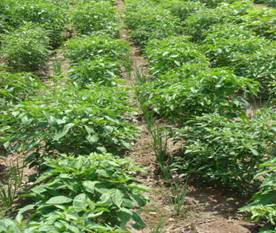
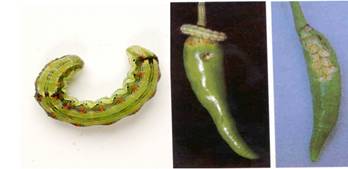
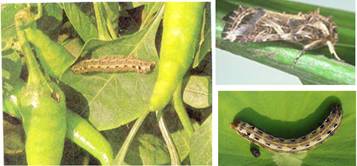
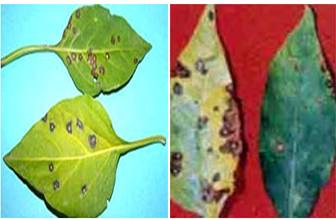
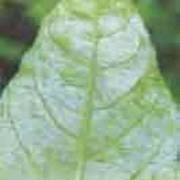
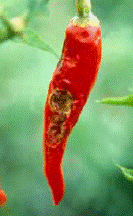

Nice Post!!
ReplyDeletePlease look here at Sulfur Suppliers
Very helpful guide for chili cultivation! 🌶️ Pairing good horticultural practices with the right agrochemical products — for pest and disease control — can really boost both yield and quality. Thanks for sharing!
ReplyDelete